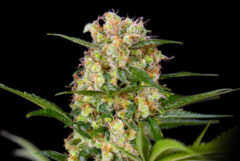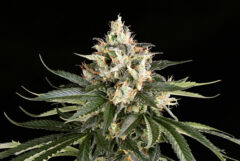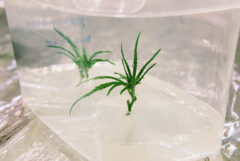We’re taking a look at our time growing Blueberry Candiez Automatic in our testing facilities. This 60/40 indica-dominant hybrid impressed us with its combination of compact size, lanky structure, and impressive yield. If you’re looking for a plant that grows like a sativa but you don’t have the headroom, this is the strain for you.
Total growing time: 75 days
Flowering time: 54 days
Final height: 106 cm
Final yield: 104 grams
THC content: 19.8%
As with all of our plants, we grew our Blueberry Candiez Automatic cannabis plant in an 8-litre plastic pot filled with BAC Lava mix. This was placed under a 1000W Phillips GreenPower HPS fixed to the ceiling 3 metres above the plant. Initially, this light was set to an 18/6 schedule before being flipped to a 12/12 schedule during the flowering phase.
Our grow space was kept at a consistent 23°C during the day and allowed to drop to 21°C at night. During the vegetative phase, we kept the relative humidity at 65% and lowered it gradually as the plant matured.
Germination & seedling
To start our Blueberry Candiez Automatic off on the right foot, we first needed to germinate our seed. To do this, we used the time-tested paper towel method as it’s the fastest, easiest, and most reliable way to germinate cannabis seeds.
Simply fold up a couple of paper towels, set them onto a plate, and add enough water so they’re thoroughly damp, but not dripping wet. Next, sprinkle your seeds on top—making sure to leave a few centimetres between each seed—and cover them with another damp paper towel. Lastly, place this all into an open plastic bag and set it somewhere warm.
After about a day, our seed cracked open and its short taproot was sticking out about a centimetre. At this point, it was time to move it to a damp Rockwool cube. We planted the seed with the taproot pointing downwards and placed it under a 600W LED lamp. This early on, seedlings are incredibly delicate so we simply left this alone for three days to give it time to take root.
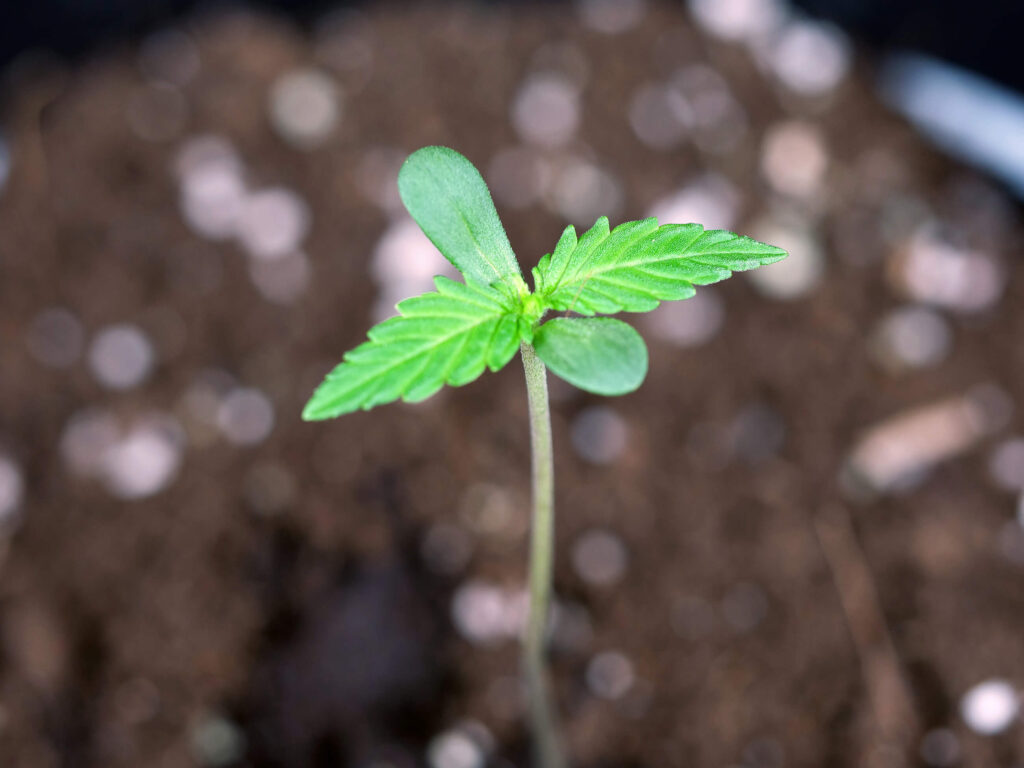
After three days, we gave our plant its first feeding with 100 ml of pH-balanced water (pH 6.2; EC 0.8) mixed with a small dose of rooting hormone. At the end of the first week, our plant was a lanky 11 cm tall and the roots were poking out of the bottom of the Rockwool cube. At this point, we moved our Blueberry Candiez plant to our 8-litre plastic pot and placed it under the 1000W lamp. Lastly, we gave it its first proper feeding with 100 ml of water (pH 6.0; EC 1.4) mixed with Bio Grow liquid nutrients.
Vegetation
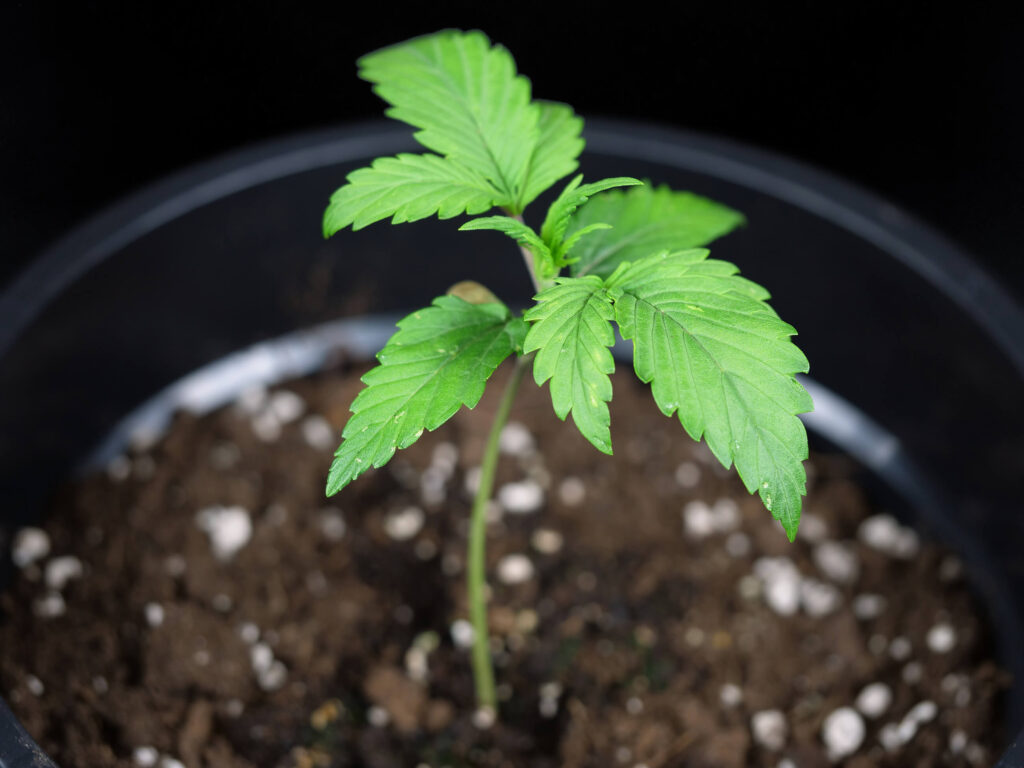
In week two, our Blueberry Candiez Automatic cannabis plant more than doubled in height to 23 cm. By the end of the week, it had grown its first set of true leaves with a second pair on the way. These were a healthy shade of light green. Anticipating another week of rapid growth ahead, we began feeding with 200 ml of water each day.
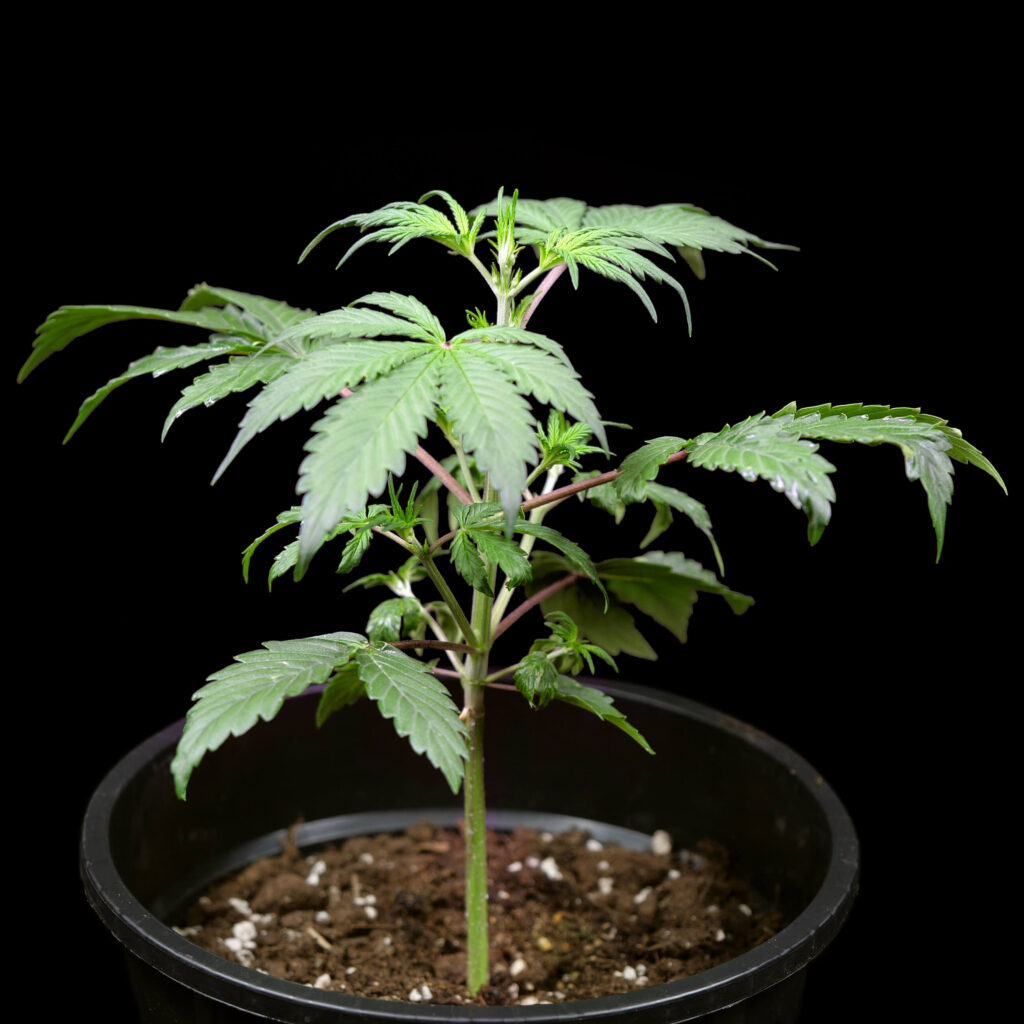
Over week three, our plant grew another 15 cm to reach a new height of 38 cm; extremely tall for such a young plant. By the end of the week, the plant had developed four full sets of leaves with very long internodal spacing. The leaves were showing some mild clawing at the tips which could mean a few different things, but isn’t terribly uncommon with plants growing this rapidly. It should clear up in a week or so as we increase feeding to 400 ml of water per day.
Finally, before switching to flowering, we hung small satchels of Neoseiulus californicus and Amblyseius swirskii from the plant’s lowest branches. These little bugs have developed a symbiotic relationship with cannabis plants and won’t harm the plant at all. Instead, these critters feed on pests like thrips and spider mites that can decimate a harvest. We replace these every four weeks to ensure a fresh supply.
Flowering
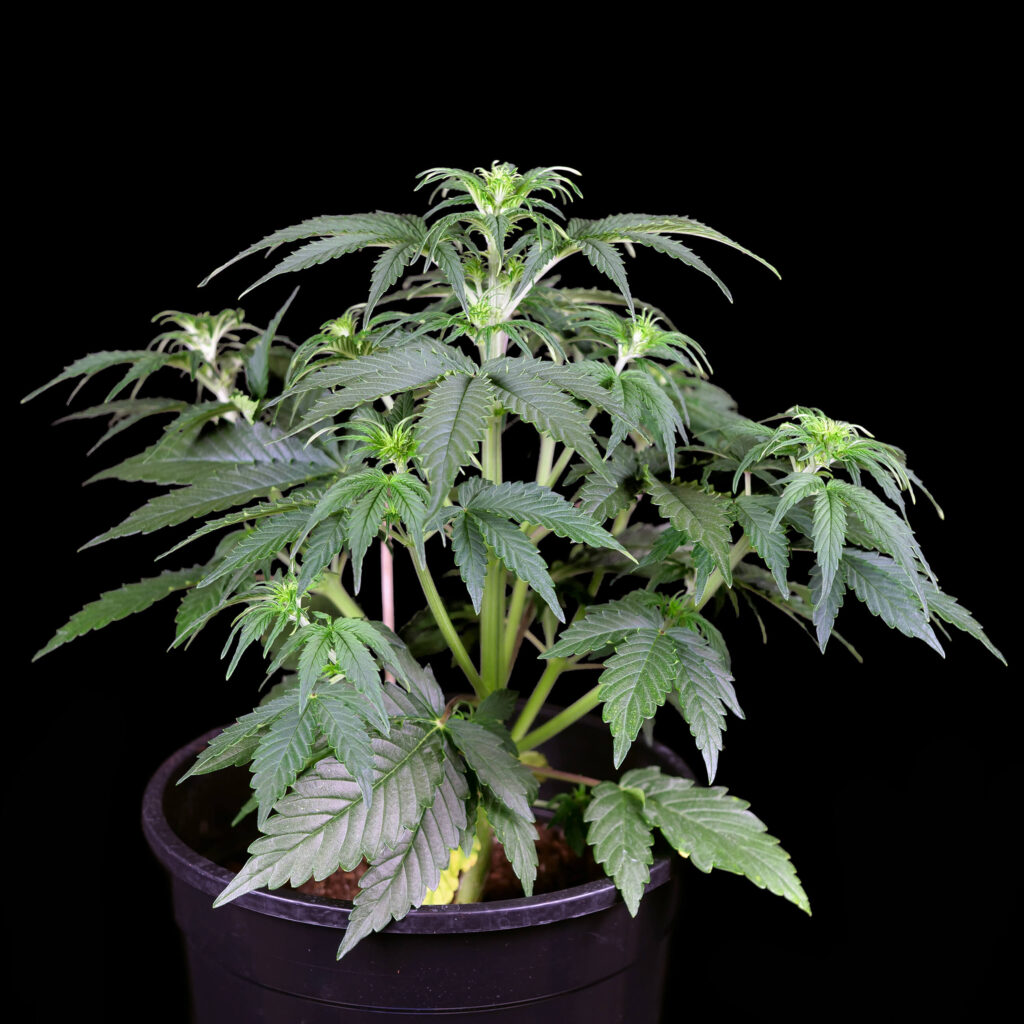
In week four, we switched our plant to flowering by changing to a 12-hours-on-12-hours-off light schedule and changing our watering habits. We were now using 800 ml per day of pH-balanced water (pH 6.0; EC 1.8) mixed with Bio Flower liquid nutrients. While the lighting switch isn’t necessary for autoflowering plants, we’ve found that the energy savings from turning off the light more than offset any decrease in harvest. Finally, we lowered the humidity to 60%. By the end of the week, our plant was 51 cm tall.
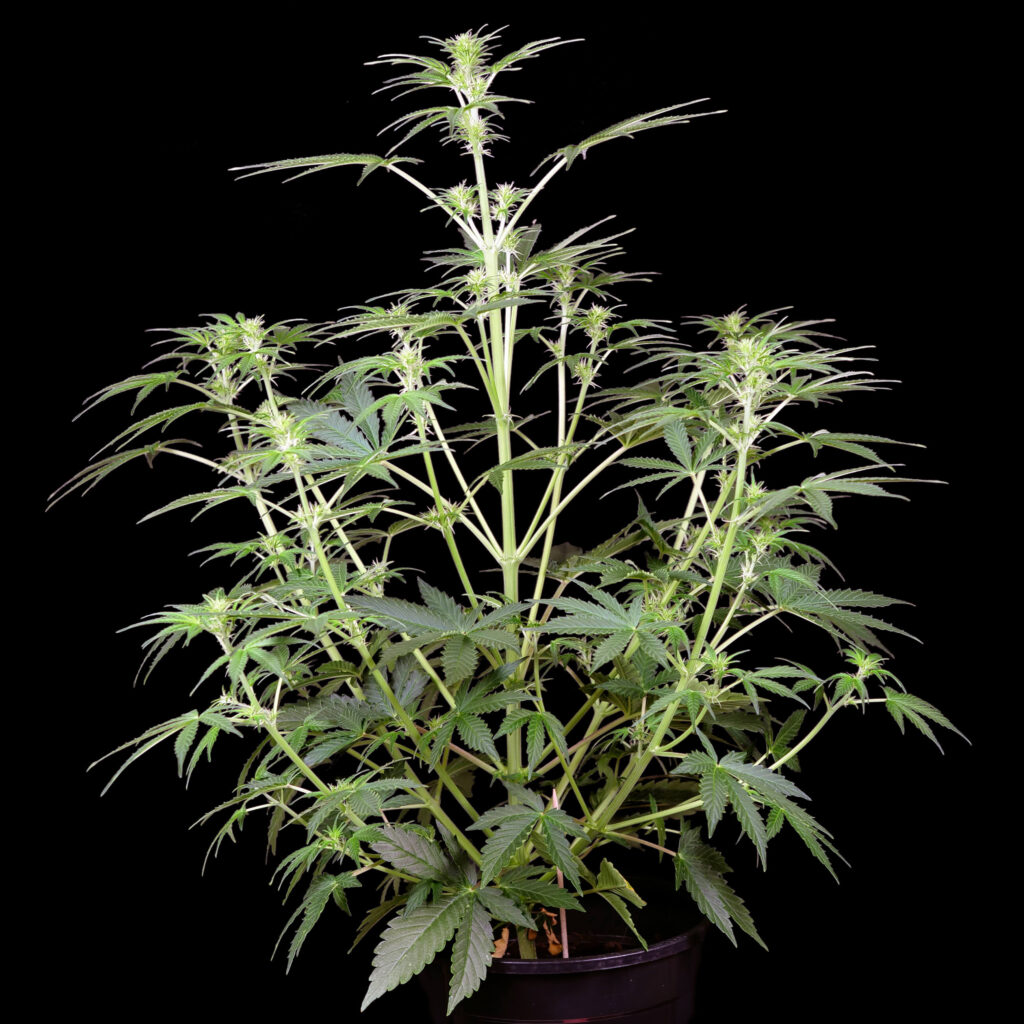
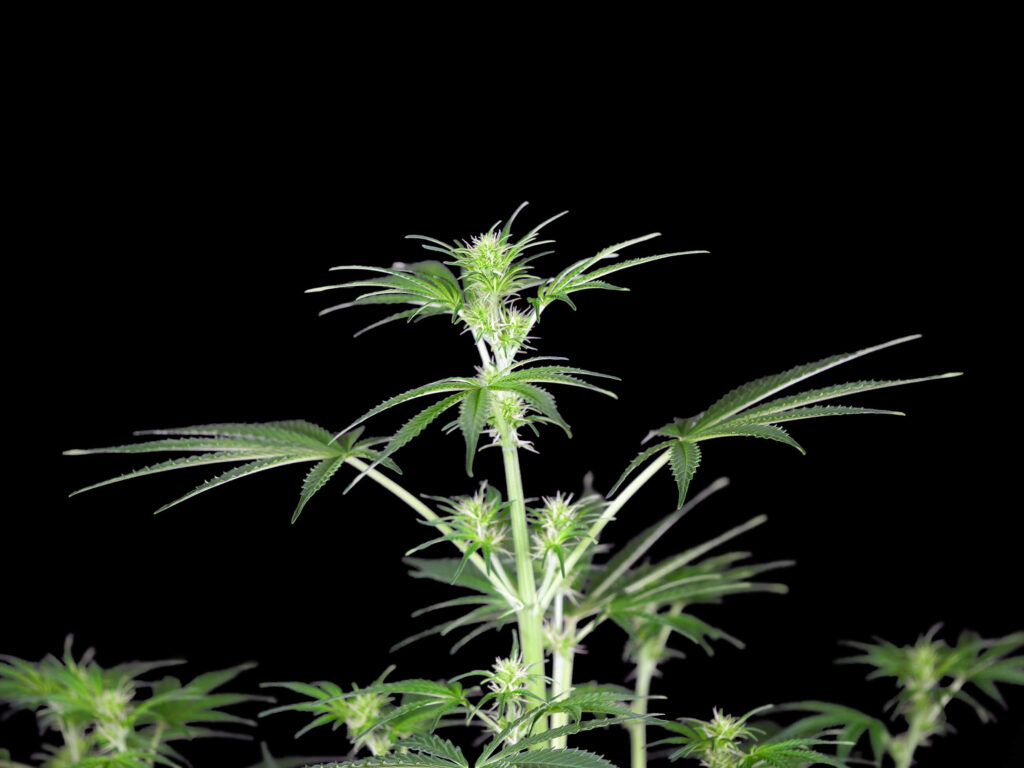
Week five saw a significant slowdown in vertical growth as our plant finished the week at a height of 60 cm; only 9 cm taller than it started. While that’s a little surprising for a plant at this stage, the real star was the lateral branches. These grew from almost nothing to more than half the height of the plant in just a few days and really highlight the fact that this strain is a 60% indica. We were now seeing the earliest signs of flowering and, to help our plant keep up, we increased our daily feedings to 1000 ml.
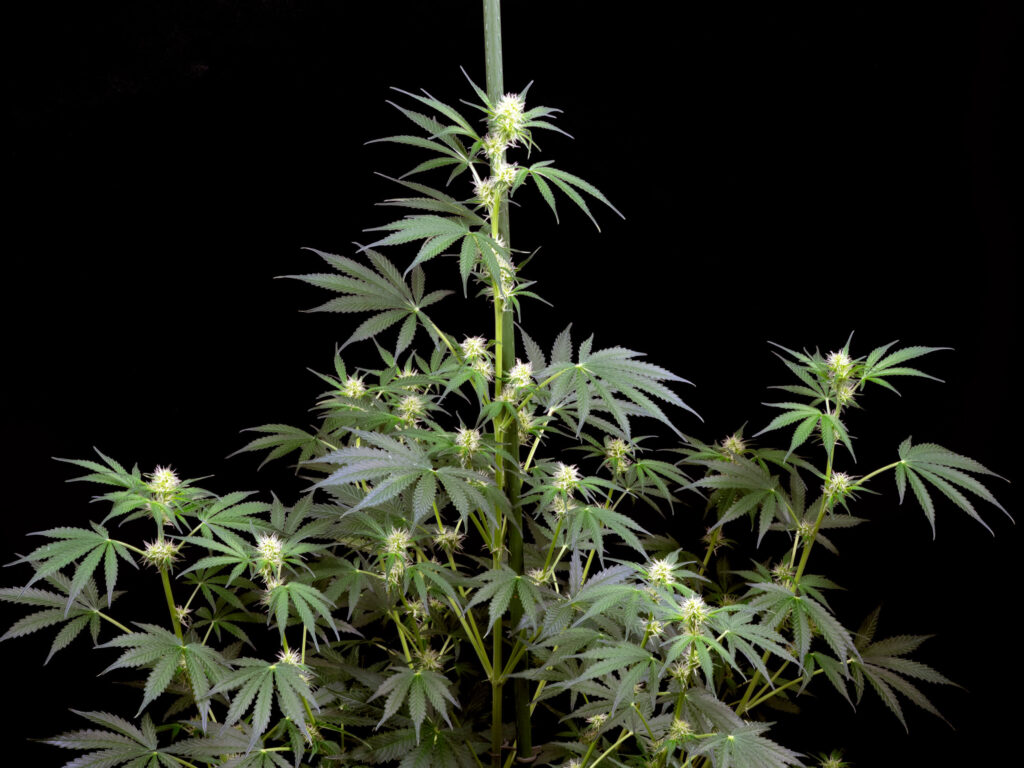
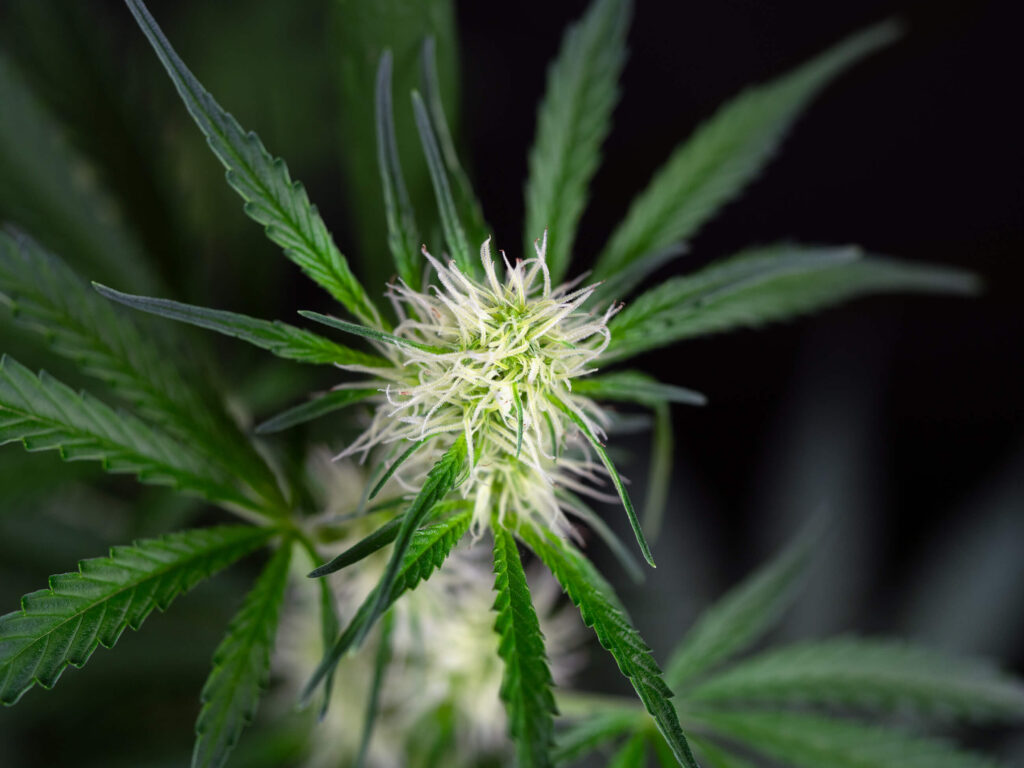
In week six, our plant was now standing 69 cm tall and the lateral branches were full of dense vegetation. By now, our plant was flowering all along each branch and the flowering sites were incredibly spaced out highlighting this strain’s 40% sativa lineage. While these were still little more than clumps of pistils, things were off to an impressive start. With full bloom just around the corner, we upped our daily feedings to 1500 ml per day.
As we worked our way through week seven, our plant continued to grow to a new height of 77 cm. This was accompanied by continued growth of the buds as each one was growing larger every day. Overall, our plant was doing incredibly well but its tall and slender frame was already struggling to support itself. With it set to explode with flowers any day now, we needed to support the main stalk and a few lateral branches with wooden dowels.
Week eight saw more vertical growth with our plant reaching a new height of 83 cm. By now, the main stalk had grown well above the lower branches, but every flowering site was developing ever-larger buds and the entire plant was now covered in flowers. At this point, they weren’t terribly dense but the size was impressive. By now, the plant was beginning to give off a mild floral scent that —while distinct—is hardly overwhelming.
In week nine, our Blueberry Candiez Automatic plant grew to 94 cm tall and continued to rapidly develop its buds. These were growing noticeably denser with each passing day and a few flowers were starting to show orange pistils indicating that harvest was rapidly approaching. While the top of the plant was a picture-perfect forest of elongated colas, the lower reaches were a tangled mess of dense vegetation. To reduce the risks of mould at this crucial stage, we lowered the humidity to 55%.
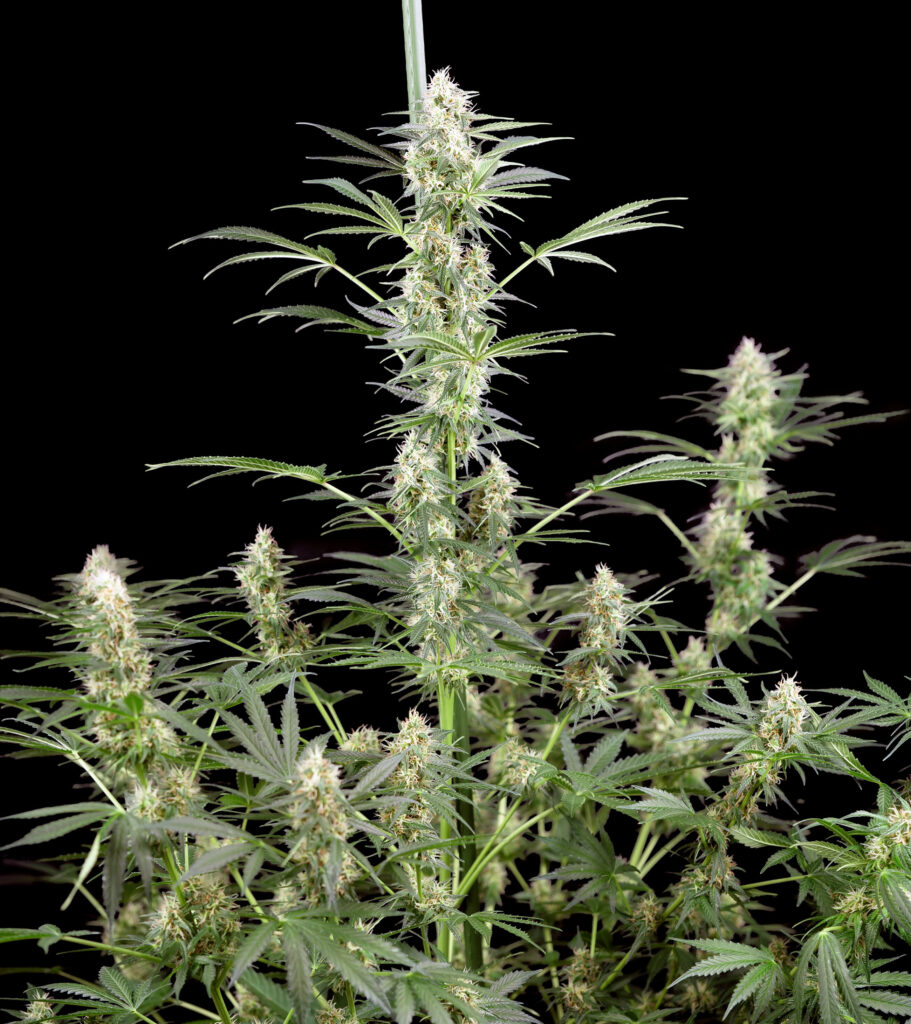
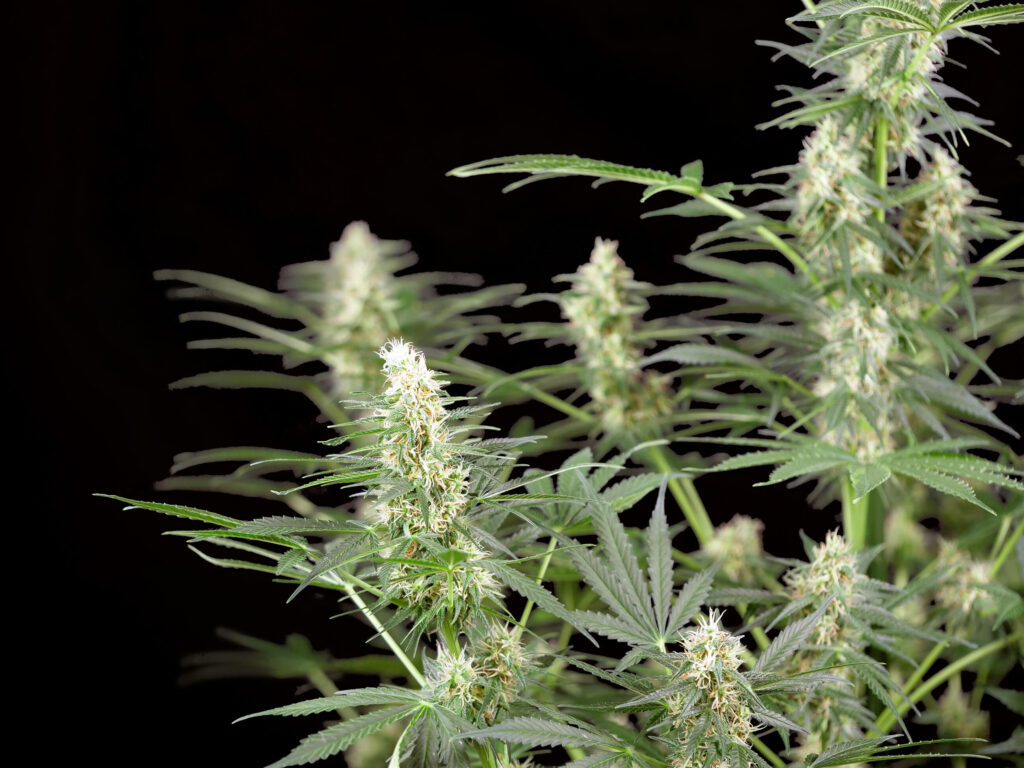
Over week ten, our plant’s main cola grew upwards to give the plant a total height of 96 cm. Every flower was now quite dense and covered in vibrant orange pistils. At this point, there was nothing left to do but allow nature to run its course and let the plant ripen on its own.
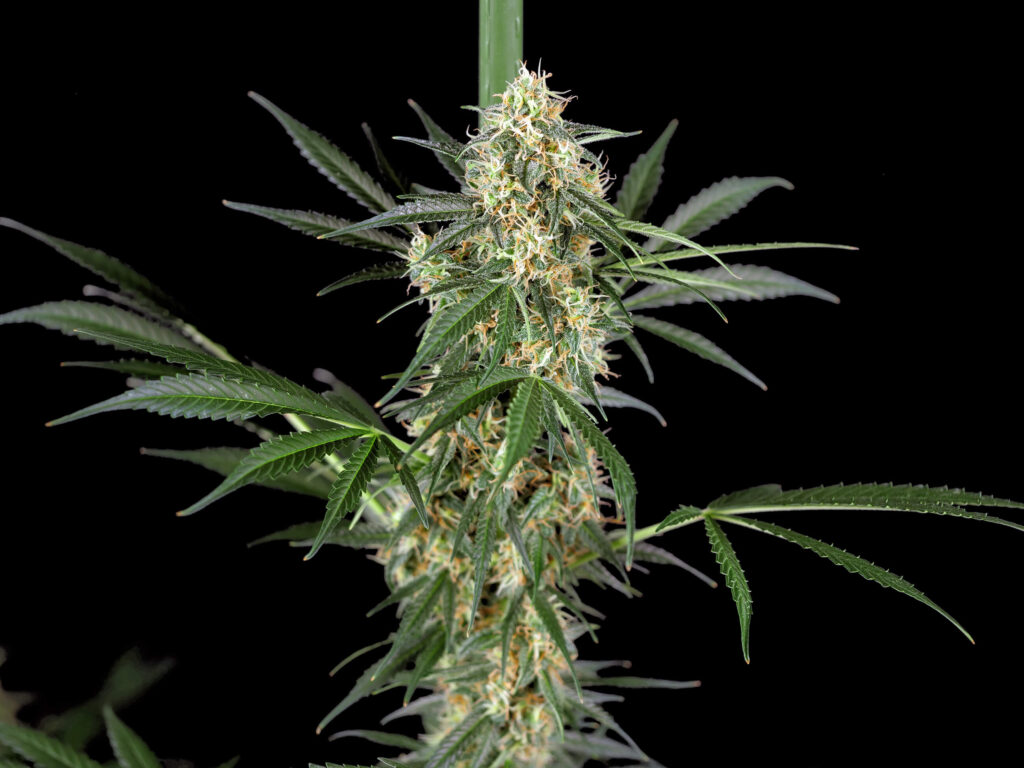
Week eleven saw our plant grow to a new height of 100 cm as the main colas continued to grow upwards. The buds continued to grow denser and harvest was just around the corner.
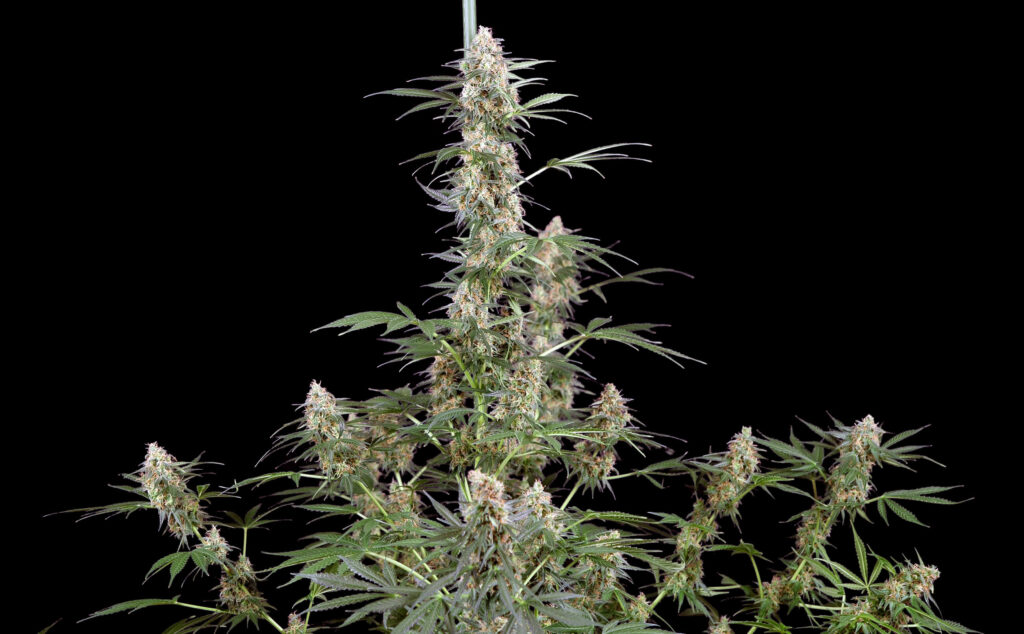
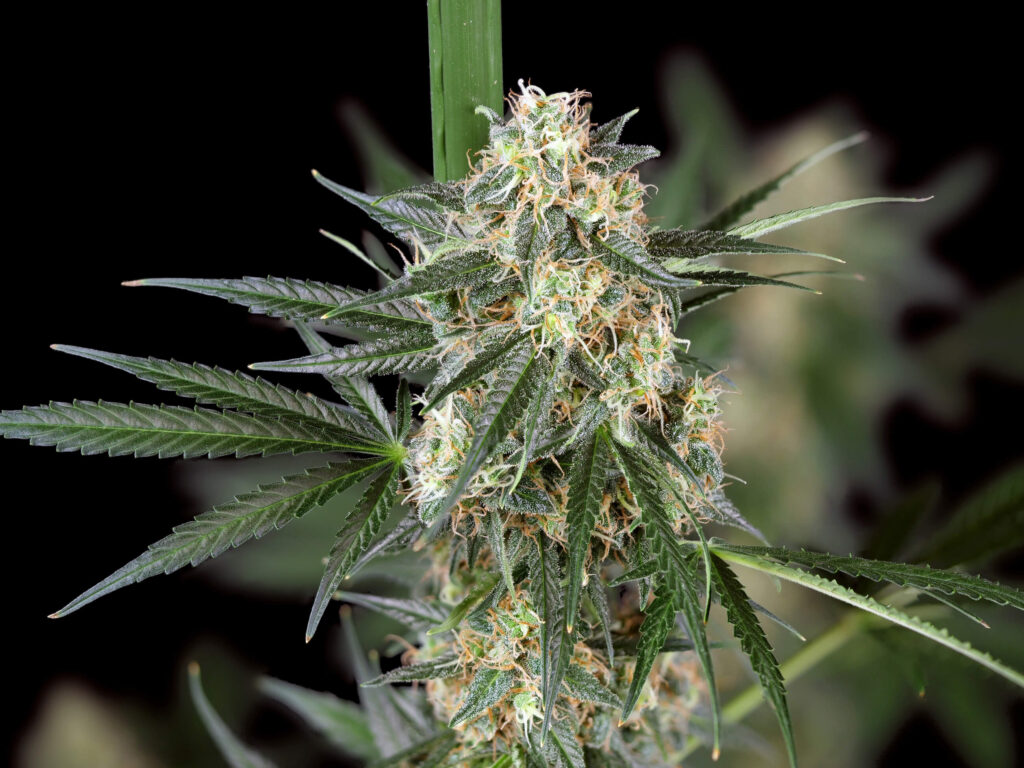
Finally, at the end of week twelve, it was time to harvest our Blueberry Candiez plant. With a final height of 106 cm after 12 weeks, we were genuinely impressed and excited to see the results.
Harvest
To harvest our Blueberry Candiez Automatic cannabis plant, we began by cutting it down at the base, removing the fan leaves, and hanging it upside-down to dry in a dark room at a consistent 15.5°C with a relative humidity of 50%. We left it like this until the branches were dry enough to snap when bent; typically anywhere from 10-20 days.
Once the plant was sufficiently dry, we removed the buds and trimmed them up before placing them into glass jars for curing. While this strain has fairly dense vegetation, most of that is the fan leaves which were removed in the previous step. The buds themselves don’t have too much vegetation and the leaves that are there are fairly small and spaced out making for an easy trim.
Once done, these glass jars were left unsealed for 24 hours to allow the bulk of the remaining moisture to evaporate. Finally, the jars were sealed and then “burped” multiple times a day for the next several weeks. Gradually, this frequency was lowered to only once per day. Overall, the entire process takes 4-6 weeks and is a vital step in ensuring high-quality taste.
In the end, we were able to harvest 104 grams of dried flower with a THC content of 19.8%.
Terpene profile
While growing, Blueberry Candiez Auto has only a fairly mild aroma that’s distinctly weedy but not overpowering. If you’re only growing one or two of these, you shouldn’t need to worry too much about odour control. Once harvested and cured, though, this strain takes on a completely different profile with sweet hints of berry mingling perfectly with a more pungent sharpness. The flavour is equally complex citrus, mojito, and sweet berry all dance on top of more earthy—almost chocolatey—notes.
The effects of Blueberry Candiez Auto are mostly what you’d expect from a 60/40 indica-dominant hybrid; an uplifting and euphoric mental high that slowly gives way to a more relaxed body stone as time goes on. The effects are slightly sedative but still allow for a clear head making this a perfect choice for unwinding during a movie at the end of the day.
The outcome
Overall, we were very impressed with the performance of our Blueberry Candiez Automatic cannabis plant. Incredibly lanky but still compact enough for any indoor grower, this strain is an outstanding example of a cannabis hybrid that pulls the best parts from its complex heritage. While its slim branches might not be the most robust, a little extra support is all that you’ll need to bring this strain to fruition.
- Disclaimer:Laws and regulations regarding cannabis cultivation differ from country to country. Sensi Seeds therefore strongly advises you to check your local laws and regulations. Do not act in conflict with the law.







